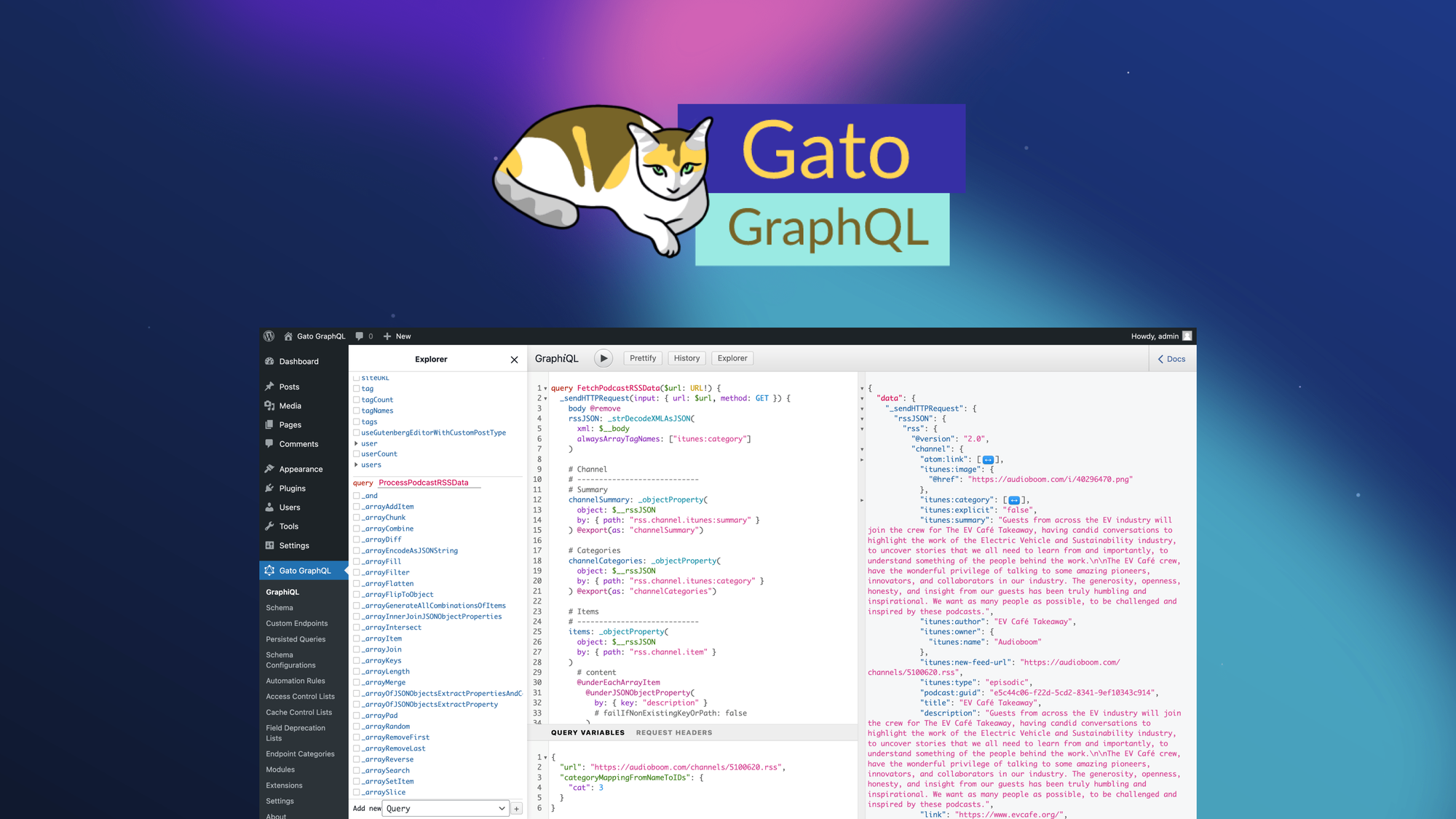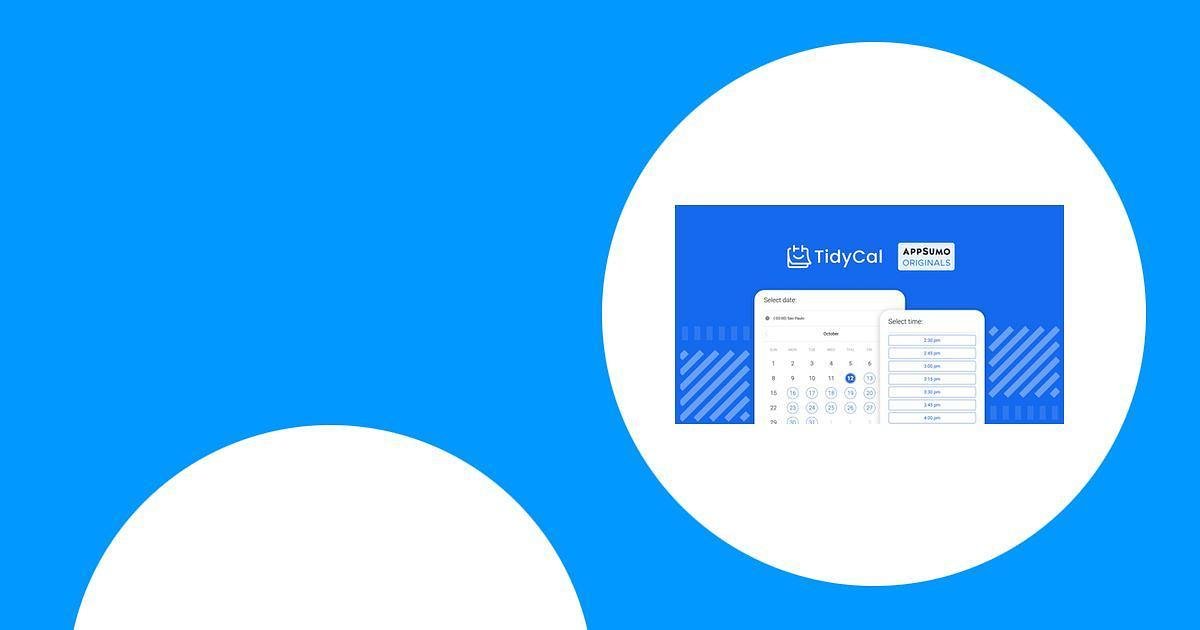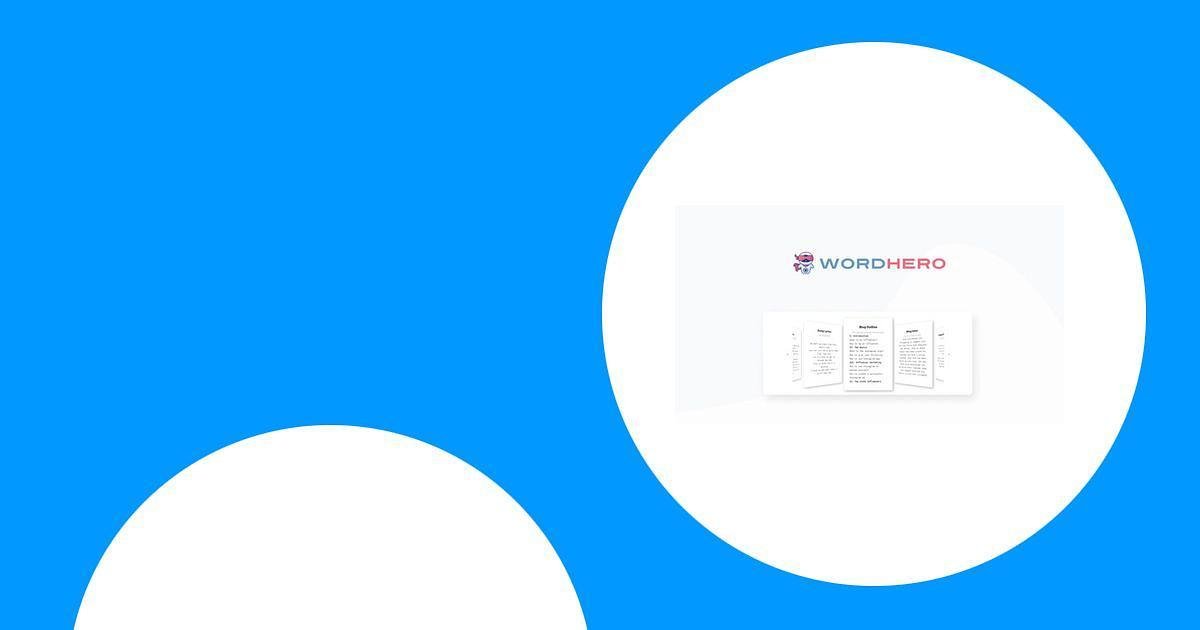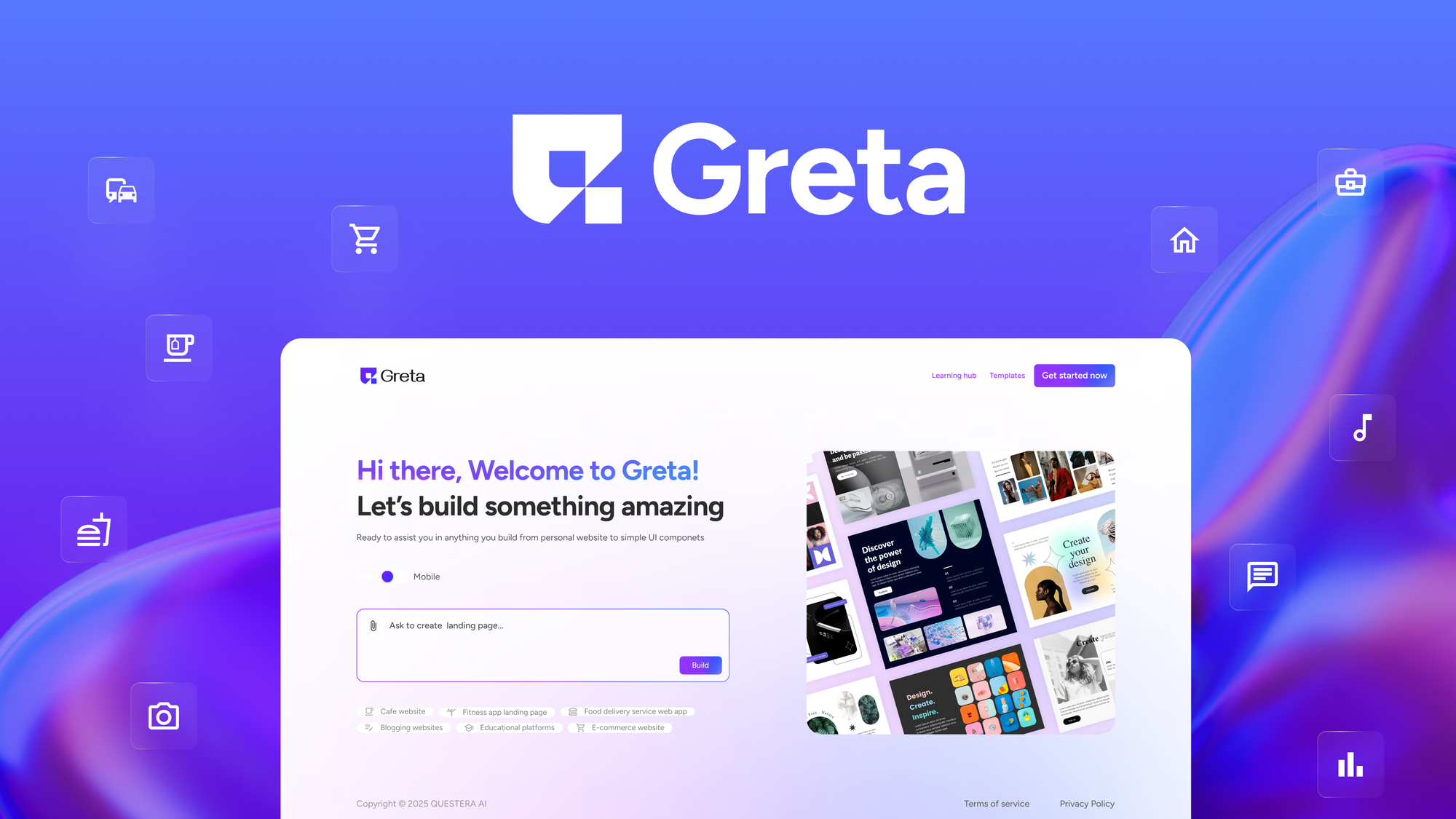When I first stumbled upon Gato GraphQL, I was on the hunt for a way to manage my WordPress data more effectively without the usual API headaches. I mean, how many times have I pulled my hair out trying to juggle complex APIs while keeping my website running smoothly? Let me tell you a bit about my journey with Gato GraphQL, which turned out to be a game changer for my workflow.
Table of Contents
ToggleUnderstanding Gato GraphQL and its Core Features
In my recent exploration of Gato GraphQL, I discovered a powerful tool designed specifically for managing WordPress data. It offers a streamlined solution that makes it easy for developers and content creators to integrate their WordPress sites. What’s even more exciting? It’s currently available on AppSumo as a lifetime deal for just $69, down from $499. This deal is a steal, especially with a 60-day money-back guarantee!
Simplified API Management for WordPress
One of the standout features of Gato GraphQL is its ability to simplify API management. Traditional APIs can be complex, often requiring extensive coding knowledge. But Gato GraphQL changes the game. It allows users to create versatile APIs that can fetch, transform, and update any piece of data effortlessly. This means less time spent on coding and more time focusing on what really matters—your content.
“Gato GraphQL simplifies the often convoluted API process, making it accessible to a broader audience.” – Leonardo Losoviz
Versatile Support for Various Database Types
Another impressive aspect of Gato GraphQL is its support for various database types. Whether you’re dealing with posts, pages, comments, media, or user data, this tool has you covered. This versatility is crucial for developers and content creators alike. It allows for complex queries to be executed in a single request, which can significantly speed up your workflow. Imagine being able to pull all the data you need in one go!
Enhanced Performance with Single Request Queries
Performance is key in today’s fast-paced digital world. Gato GraphQL enhances performance by allowing single request queries. This means you can execute complex operations swiftly without bogging down your server. I found this feature particularly beneficial when building dynamic headless sites. Using WordPress as my CMS alongside any JavaScript framework was a game-changer. It provided me with the tools necessary to manage data seamlessly.
Moreover, Gato GraphQL offers robust security features. It allows for granular permissions based on user roles or specific IP addresses. This ensures that sensitive data remains protected, which is a top priority for any website owner.
Automation and Efficiency
Automation is another significant strength of Gato GraphQL. I could trigger GraphQL queries in response to various WordPress events without leaving the editor. This streamlined process means I could automatically run persisted queries linked to specific WordPress action hooks. The result? Enhanced productivity on my site.
In summary, Gato GraphQL stands out as a valuable asset for anyone serious about managing WordPress data effectively. With its combination of advanced GraphQL queries, robust automation, and a focus on security, it’s a tool worth exploring. If you’re looking to enhance your WordPress management capabilities, I highly recommend checking out Gato GraphQL. You can find more information and grab the deal here.
Elevating WordPress Development with Automation
In my journey through WordPress development, I’ve discovered that automation is a game-changer. It’s not just about saving time; it’s about transforming how we manage our sites. With tools like Gato GraphQL, I can trigger queries automatically based on WordPress events. This means less time spent on repetitive tasks and more time focusing on what truly matters: creating great content.
Triggering Queries Automatically
Imagine this: you publish a new post, and the data you need is automatically fetched and updated without lifting a finger. That’s the beauty of automation. By using Gato GraphQL, I can set up queries that respond to specific WordPress actions. For instance, when a post is published, I can trigger a query that updates related content or fetches analytics data. This seamless integration allows me to keep my site dynamic and engaging.
Persisted Queries for Efficiency
Another feature I love is the ability to use persisted queries. What does that mean? Simply put, it allows me to save frequently used queries and run them with minimal effort. Instead of rewriting complex queries every time, I can just call them up. This not only saves time but also reduces the chances of errors. It’s like having a shortcut for the tasks I do repeatedly.
- Save time by reusing queries.
- Reduce errors with consistent query execution.
- Focus on content, not code.
Improved Gutenberg Block Development
Gutenberg has changed the way we build WordPress sites. With Gato GraphQL, I found that block development becomes much smoother. The internal GraphQL endpoint simplifies the process, eliminating the need for REST controllers. This means I can create custom blocks that fetch data in real-time, enhancing the user experience. It’s like having a powerful engine under the hood, making everything run more efficiently.
As Leonardo Losoviz aptly puts it,
“Automation is not just a time-saver; it’s a necessity for modern web development.”
This couldn’t be more true. The ability to automate GraphQL queries has transformed my site management. I can focus on crafting engaging content rather than getting bogged down by admin tasks.
In conclusion, automation in WordPress development is not just a luxury; it’s essential. With tools like Gato GraphQL, I can streamline my workflow, enhance my site’s functionality, and ultimately deliver a better experience for my users. If you’re looking to elevate your WordPress game, I highly recommend checking out Gato GraphQL. You can find it on AppSumo for a limited-time lifetime deal at this link.
API Security and User Privacy with Gato GraphQL
When it comes to managing data securely, especially in a world where data breaches are all too common, API security is crucial. I recently explored Gato GraphQL, and I was impressed by its approach to user privacy and data protection. This tool not only simplifies the API process but also ensures that sensitive information remains secure.
Granular Permissions Based on User Roles
One of the standout features of Gato GraphQL is its granular permissions system. This means that you can set permissions based on user roles, capabilities, or even specific IP addresses. Imagine being able to control who accesses what data with such precision! This level of control is essential for any organization that values security.
For instance, if you have a team of content creators, you can allow them to access only the data they need while keeping sensitive information locked away. This not only protects your data but also builds trust with your users. As someone who has dealt with various APIs, I can say that this feature is a game changer.
GDPR Compliance for Data Protection
With the rise of data protection regulations like GDPR, ensuring compliance is more important than ever. Gato GraphQL takes this seriously. It provides the tools necessary to manage user data responsibly. This means you can handle personal data with care, ensuring that your practices align with legal requirements.
Being GDPR compliant is not just about avoiding fines; it’s about respecting user privacy. When users know their data is handled properly, it fosters trust. And trust is invaluable in today’s digital landscape.
Control Over Sensitive Data Exposure
Another critical aspect of Gato GraphQL is its ability to control sensitive data exposure. In my experience, many APIs expose more data than necessary, which can lead to vulnerabilities. With Gato GraphQL, you can specify exactly what data is exposed through your API. This minimizes the risk of unauthorized access.
By limiting data exposure, you’re not just protecting your organization; you’re also safeguarding your users. It’s a win-win situation. This feature is particularly beneficial for developers and IT/security agencies looking to maintain a high level of security.
“In an era where data breaches are commonplace, securing user data with granular API permissions is the way forward.” – Unknown
In conclusion, Gato GraphQL offers a comprehensive solution for managing WordPress data securely. With its focus on granular permissions, GDPR compliance, and control over data exposure, it stands out as a tool that prioritizes user privacy. As someone who values security in software development, I believe Gato GraphQL is a must-try for anyone serious about protecting their data.
For those interested in exploring Gato GraphQL further, it’s available on AppSumo for a one-time payment of $69. This is a fantastic deal considering the robust features it offers. You can check it out here.
Real-World Applications and User Experience
In my journey with Gato GraphQL, I’ve discovered its immense potential for managing WordPress data effectively. This tool is not just another gimmick; it truly stands out in the realm of API management. As someone who has navigated various platforms, I can confidently say that “real-world functionality often distinguishes a tool from a gimmick.” – Unknown.
Building Headless Sites
One of the most exciting features of Gato GraphQL is its capability to build headless sites using various JavaScript frameworks. Imagine using WordPress as your Content Management System (CMS) while leveraging frameworks like React or Vue.js. This combination opens up a world of possibilities. I found that it allowed me to create dynamic, responsive sites without the usual limitations of traditional setups.
With Gato GraphQL, I could craft versatile APIs that fetch and transform data seamlessly. This means I could manage posts, pages, and even user data without exposing sensitive back-end information. The internal GraphQL endpoint simplifies the development of Gutenberg blocks, eliminating the need for complex REST controllers. It’s like having a powerful engine under the hood, driving my site’s performance.
Utilizing Custom Endpoints
Another standout feature is the ability to utilize custom endpoints tailored to specific needs. This flexibility is a game-changer. I could create endpoints that cater to unique project requirements, enhancing the overall efficiency of my workflow. For instance, if I needed to pull specific data for a custom application, I could do so without hassle. This level of customization is rare and incredibly valuable.
Interactive Demos
Gato GraphQL also offers interactive demos that showcase its capabilities. These demos are not just for show; they provide a hands-on experience that helps users understand the tool’s potential. I found these demos particularly helpful when I was learning how to implement various features. They allowed me to experiment and see results in real-time, making the learning curve much smoother.
Moreover, the automation features are impressive. I could trigger GraphQL queries based on WordPress events without leaving the editor. This streamlined my processes significantly. Tasks that once took time and effort became automated, allowing me to focus on more critical aspects of my projects.
In conclusion, my real-world experience using Gato GraphQL has shown its potential to significantly elevate site management. The combination of building headless sites, utilizing custom endpoints, and engaging with interactive demos creates a powerful toolkit for developers and content creators alike. I believe that with Gato GraphQL, anyone can enhance their workflow and create dynamic applications with ease.
The Value of Gato GraphQL’s Lifetime Deal
When I first stumbled upon Gato GraphQL, I was intrigued. A powerful GraphQL server designed specifically for managing WordPress data? It sounded promising. And then I saw the price: just $69 for a lifetime deal. This is a significant drop from the original price of $499. In today’s market, that’s a steal!
Cost-Effective Pricing
Let’s face it, we all love a good deal. Gato GraphQL offers a cost-effective solution compared to other tools available. For just a one-time payment, you get access to a robust platform that simplifies API management. Think about it: how often do you find a quality tool that won’t drain your wallet? This pricing structure makes it appealing for both developers and content creators.
Feature Comparison Across Tiers
Gato GraphQL provides different tiers, each with its own set of features. Here’s a quick breakdown:
- Basic Tier: Ideal for small projects, offering essential features.
- Standard Tier: A step up, with additional functionalities for growing sites.
- Premium Tier: Best for larger operations, supporting more domains and advanced features.
Each tier is designed to cater to various needs, making it easy to choose one that fits your project. The flexibility in features ensures that you’re not paying for what you don’t need.
Long-Term Benefits of Investing
Investing in Gato GraphQL isn’t just about the immediate savings. It’s about the long-term benefits. With the potential for future updates, the value of this tool may increase even further. As the saying goes,
“Investing in tools that evolve with your needs is worth every penny.” – Unknown
Imagine having a tool that grows with you. Gato GraphQL allows you to manage your WordPress data efficiently, without exposing sensitive information. It supports various database types and enables complex queries in a single request. This can significantly speed up your workflow, which is a game-changer for developers and content creators alike.
Moreover, Gato GraphQL’s automation capabilities are impressive. You can trigger GraphQL queries in response to WordPress events, streamlining processes that usually require manual work. This efficiency means more time for what really matters—creating great content.
As of now, Gato GraphQL has a modest user base, but its current monthly recurring revenue of $202.67 shows that it’s gaining traction. The platform is designed not just as an external API but as an internal tool that simplifies administrative tasks within WordPress. This makes it a valuable asset for anyone serious about managing their WordPress data effectively.
In conclusion, Gato GraphQL’s lifetime deal is not just a bargain; it’s an investment in your future projects. With its cost-effective pricing, a variety of features across tiers, and long-term benefits, it’s a tool worth considering. If you’re looking to enhance your WordPress management capabilities, I highly recommend checking it out. You can find more about it through my affiliate link: Gato GraphQL Lifetime Deal. Trust me, you won’t regret it!
TL;DR: Gato GraphQL is a powerful tool for managing WordPress data that simplifies API integration, enhances security, and automates workflows with a flexible, user-friendly approach. Its lifetime deal priced at $69 makes it an attractive offer for WordPress users.






